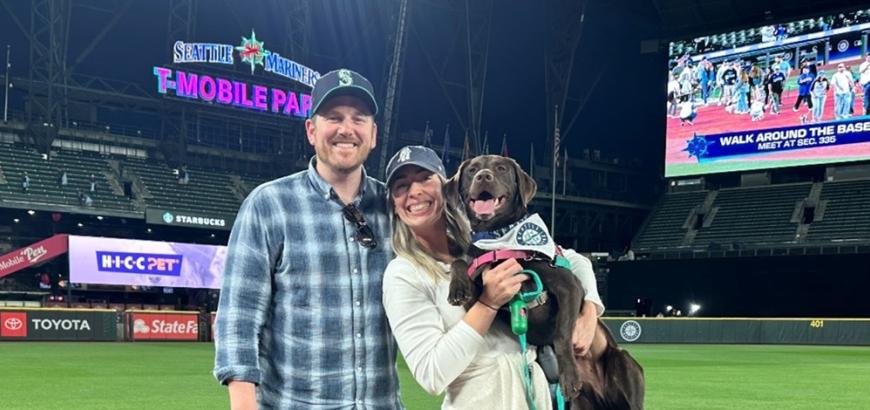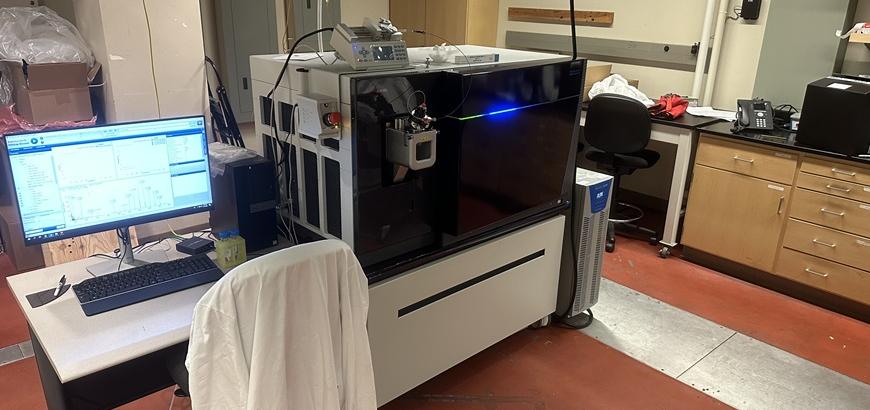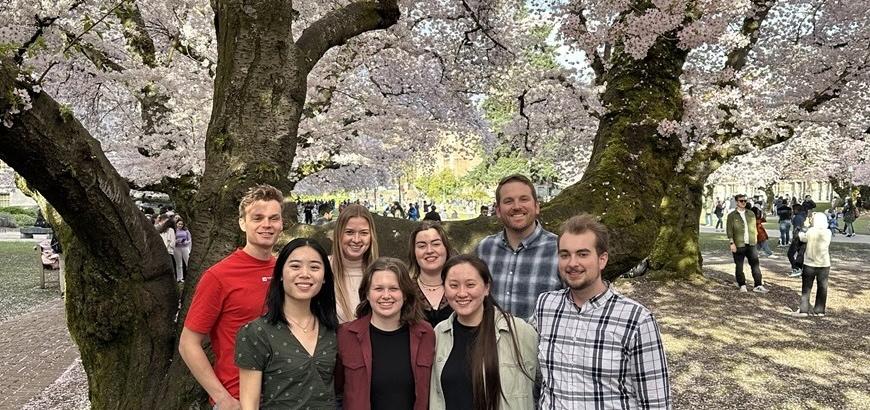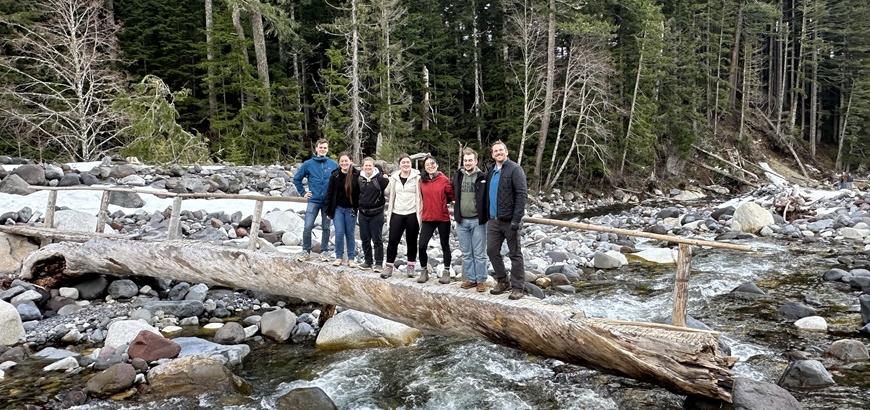Nick Riley is a native of Louisville, Kentucky whose academic career has taken him to South Carolina, Wisconsin, and California prior to landing in Seattle.
Nick was a Robert C. McNair Scholar and member of the South Carolina Honors College for his undergraduate studies at the University of South Carolina. There he participated in numerous activities, including being a University Ambassador (tour guide), Resident Mentor, Orientation Leader, and member of the Men’s Club Rugby Team. He also earned several awards, including the Algernon Sydney Sullivan Award that is presented annually to the top undergraduate student. Originally interested in forensic science, he pursued a version of “choose your own adventure” with his studies as a chemistry and psychology double major with minors in criminal justice and neuroscience. These academic interests led him to do undergraduate research in forensic analytical chemistry with Prof. Stephen Morgan, where he got his first exposure to chemical instrumentation. During his time working in the lab, Prof. Morgan commented that Nick asked far more questions about the mass spectrometers they were using to measure various molecular dyes from fabric fibers than he did about other aspects of their research. With that, he encouraged Nick to look into graduate schools where he could focus on the intricacies of mass spectrometry (MS).
That search led Nick to Prof. Josh Coon’s group at the University of Wisconsin-Madison for his graduate studies. There Nick developed MS technology for proteomic applications, with an emphasis on a tandem MS method co-invented by Prof. Coon called electron transfer dissociation (ETD). Funded by an NSF Graduate Research Fellowship and an NIH F99/K00 award, he built custom instrumentation, methodology, and software to implement supplemental activation strategies (termed activated ion-ETD, AI-ETD) to improve ETD-based sequencing of peptides and proteins. This technology proved especially useful for characterizing post-translational modifications, which also introduced him to the world of glycoproteomics. The complexities of glycobiology and clear need for technological advances spurred his interest in glycoscience and motivated him to join the research group of Prof. Carolyn Bertozzi at Stanford University following his doctoral work.
With funding through K00 and K99 awards from the NIH, Nick’s postdoctoral work focused on mass spectrometry and chemical biology approaches to characterize mucin-domain glycoproteins and the secretome. Mucin-domain glycoproteins harbor multiple types of glycosylation, but are characterized by dense regions of O-glycosylation that remain enigmatic. Nick led highly collaborative efforts to characterize these complex biomolecules, including strategies to localize O-glycosites using tandem MS, new algorithms to rapidly and accurately identify O-glycopeptides from tandem MS spectra, and chemoproteomic enrichment platforms to define the first catalogue of the human “mucinome”. Concurrent with these efforts, he co-pioneered a chemoproteomic approach for cell-type selective in vivo labeling, which he used to study contributions of specific cell types to the plasma secretome. Throughout this work, Nick mentored multiple junior scientists and accumulated several accolades, including Rising Star in Proteomics and Metabolomics named by the Journal of Proteome Research, and Emerging Talent in Academia named by the American Society for Mass Spectrometry. A highlight of his postdoctoral time was when his mentor Prof. Bertozzi won the 2022 Nobel Prize in Chemistry for her contributions to pioneering bioorthogonal chemistry.
Nick joined the Chemistry faculty at the University of Washington as an assistant professor in September 2023. He holds adjunct appointments in the Departments of Biochemistry and Genome Sciences, and he is associated with the Cancer Consortium in Seattle, the Molecular Engineering & Sciences Institute, the Molecular and Cellular Biology program, and the Biological Physics, Structure, and Design program. The Riley research group leverages state-of-the-art mass spectrometry and chemical glycobiology to develop innovative technologies for investigating glycocode regulation and dysregulation. Specifically, the group is interested in understanding how altered cell surface phenotypes manifest in cancer progression and drive metastasis. Through a combination of MS-based multi-omics, bioinformatics, and chemical biology, their goal is to use a systems-level approach to glycobiology to further our understanding of human health and disease and to advance therapeutic glycoscience. This work is made possible by generous funding from the Boris and Barbara L. Weinstein Endowed Chair in Chemistry that allowed Nick to acquire cutting-edge instrumentation and rapidly build his group of graduate students and postdoctoral scholars. Nick is especially excited to train the next generation of scientists in mass spectrometry and glycobiology, where we need more curious and innovative talent. Thanks to the department’s investments, there are numerous projects underway and exciting progress already being made. The Riley research group is further supported by an NIH R00 Pathway to Independence Award and a recent American Society for Mass Spectrometry Research Award.
Outside of research, Nick finds joy in sports, food, music, and the outdoors – all of which make Seattle an exciting place to call home. He and his wife Shannon have enjoyed exploring the restaurants, trails, and sporting events of the Pacific Northwest together, and their chocolate lab Mox has been especially fond of all the bodies of water where she can swim.
For more information about Nick and the Riley research group, please visit the group website.



